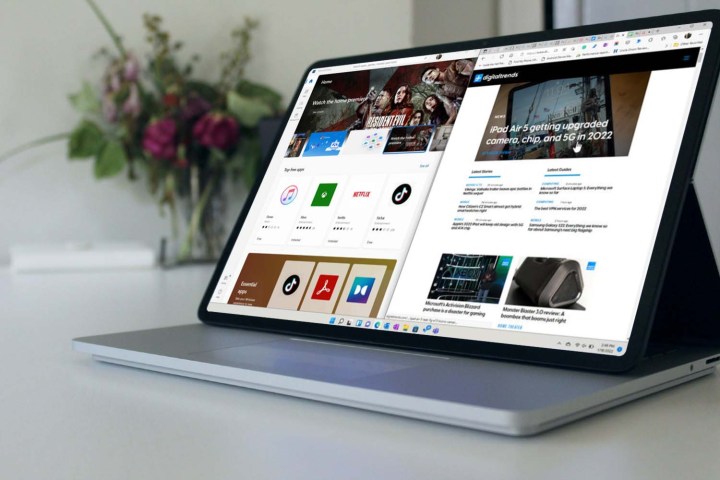Microsoft is reportedly working on launching a number of new Windows 11 features that could soon roll out to the public. The features that are being planned include new gestures, support for app folders in the Start menu, a new method of snapping windows to enable more seamless multitasking, and the support of new gestures to help elevate the experience of Windows 11 on tablets. Though a specific release date is not yet known, it’s anticipated that some of these features could arrive on the next major Windows release, also known as Sun Valley 2, while a few enhancements could be part of the current Windows 11 update.
The company has not confirmed any of the features referenced, and the report of the new features comes by way of technology publication Windows Central, which reported that the company is preparing the features initially for a beta build targeting Windows Insiders testers on the Dev Channel. The publication cited a few contacts for its report, noting that it was told that Microsoft had spent the previous week working on a number of new features for Windows 11. Report of the new changes follows on the heels of a recent Windows 11 preview release.

With its Windows 11 features road map, it appears that Microsoft is once again tweaking its famed Start menu. Similar to how folders work on the desktop, with the new Start menu change, you’ll soon be able to drag app icons on top of each other to instantly create folders. The support of folders in the Start menu could help with better organization and reduce clutter.
In addition to a more organized Start menu, Microsoft is also working on a new user experience with multitasking by bringing a new Snap Bar feature, which will allow various windows to snap together. Now, when a window is moved around on the display, a Snap bar menu will appear from the top of the screen with further functions. While we haven’t seen this feature in action, from the sound of it, it is to what Apple had implemented on the latest version of iPadOS on the iPad tablet and the multitasking implementation Samsung has taken on its smartphones, foldables, and tablets.
For Windows tablet owners, Microsoft is allegedly also working on supporting new gestures that will make it easier to use Windows 11 on tablets. Soon, you’ll be able to swipe up from the bottom edge of the screen to reveal items like the System Tray, Quick Settings, and the Start menu. These items could potentially hide out of the way, similar to consumer Android and iPad tablets when apps are launched, giving you a full-screen view of what you’re doing, and when you need the Start menu again, for example, you can swipe up from the bottom.

Better dragging and dropping is also coming to the Taskbar. Similar to the Start menu folders, you’ll soon be able to drag and drop files and other items on to open apps. You’ll be able to drag a file, for example, onto the Microsoft Word app on the Taskbar, for example, to launch that specific document.
These are some of the bigger changes that Microsoft reportedly has planned for Windows 11, but other improvements include pinning files to File Explorer, improvements to the Notification Setting, and live captions. Additionally, Microsoft is also expected to provide a visual overhaul to legacy title bars when working with Win32 apps.
With the change, Win32 apps will soon launch with a new acrylic title bar with a blur effect, replacing the flat white title bar. This particular feature, according to Windows Central, was already briefly previewed on a recent Microsoft livestream.
Specifics about the timing of the release are not yet known, but we can expect a lot of these changes to be part of Microsoft’s Sun Valley 2 update planned for later this year. The original Sun Valley changes were part of the original Windows 11 rollout. Some smaller features, if testing proves successful, could debut on the current
Editors' Recommendations
- Windows 11 might nag you about AI requirements soon
- You’re going to hate the latest change to Windows 11
- Windows 11 tips and tricks: 8 hidden settings you need to try
- Windows 11 vs. Windows 10: finally time to upgrade?
- The best Windows 11 themes we’ve tried so far this year

